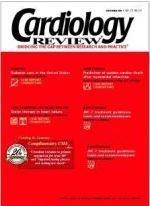Features of metabolic syndrome are tied to inflammation, cardiovascular disease, and mortality
NEW ORLEANS—Several studies presented at the 53rd annual scientific sessions of the American College of Cardiology provide new insight into the harmful relationship between high blood glucose levels, metabolic syndrome, inflammation, and increased cardiovascular risk.
The likelihood of developing cardiovascular disease increases with metabolic syndrome or diabetes, and is greatest in these populations who also have high levels of C-reactive protein (CRP), said Shaista Malik, MD, MPH, cardiology fellow, University of California, Irvine. Her study used data from 6,497 adults who participated in the Third National Health and Nutrition Examination Survey.
The risk of cardiovascular disease climbed with each additional risk factor for metabolic syndrome, and was greatest in patients with diabetes. In examining whether CRP levels could help to further stratify risk in subjects with a diagnosis of metabolic syndrome or diabetes, she found a correspondingly higher risk of cardiovascular disease in those with higher CRP compared with lower CRP levels. Compared with persons without metabolic syndrome or diabetes and a low CRP level (≤ 3 mg/L), persons with metabolic syndrome and high CRP levels (> 3 mg/L) had an odds ratio of cardiovascular disease of 2.35
(P < .001); those with diabetes and high CRP had an odds ratio of 5.60 (P < .001). “CRP levels help to further stratify risk in those with metabolic syndrome or diabetes mellitus, possibly identifying higher risk subsets that warrant more aggressive intervention,” said Dr. Malik.
In the Framingham Offspring Study, CRP was found to be related to all components of the metabolic syndrome, and this relationship was stronger in women than in men, said Martin K. Rutter, MD, professor, department of medicine, Uni-
versity of Manchester, United Kingdom. His analysis included 3,037 subjects, 24% of whom had metabolic syndrome, who were followed up for more than 8 years. The CRP level increased with each additional component of the metabolic syndrome: those with no traits of this syndrome had a mean CRP level of
0.3 mg/L, and those with four or
five traits had a mean CRP level of 4.1 mg/L. Furthermore, participants with the greatest number of metabolic syndrome characteristics were 1.8 times as likely to have a cardiovascular disease event compared with subjects with the fewest number of metabolic syndrome characteristics. Similarly, in participants with the highest CRP levels, the risk of cardiovascular disease was almost twice as high as in those with the lowest CRP levels.
Patients who develop high fasting blood glucose levels after myocardial infarction (MI) have an increased risk of death within 30 days, according to Mahmoud Suleiman, MD, professor at Rambam Medical Center in Haifa, Israel. In
a study of 577 nondiabetic patients admitted to their intensive care
unit with MI, blood glucose levels were measured after 8 hours of fasting within 24 hours of admission. The 30-day death rate was 3% among patients with fasting glucose levels in the lowest tertile (< 97 mg/dL) compared with 19% among patients with fasting glucose above 118 mg/dL. After adjusting for other risk predictors, patients with fast-ing glucose levels in the high-est tertile were 3.5 times as likely to die compared with patients whose glucose levels were in the lowest tertile (P = .002). This finding suggests that fasting glucose concentration should be measured during hospitalization in nondiabetic patients with MI.
